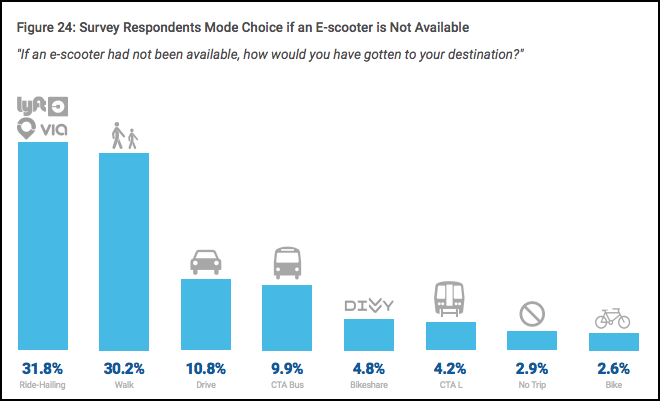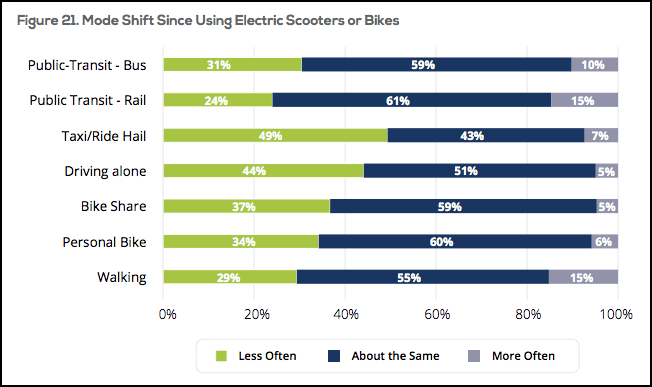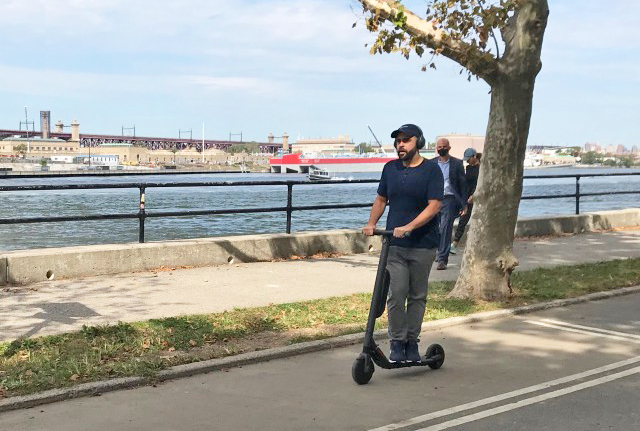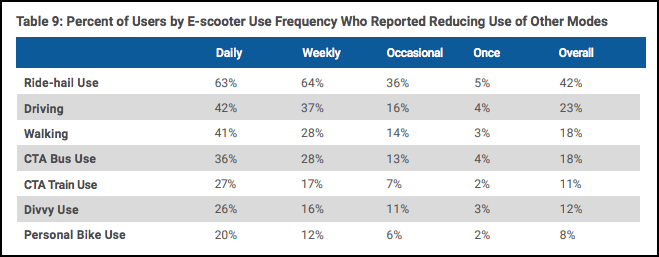Baguettes or deep dish pizza?
When New York City welcomes e-scooters to the streets in 2021, will the new micromobility take people away from using public transportation or their own feet — as it has in Paris — or siphon them away from Ubers, Lyft's or their own cars, as scooter-share did in Chicago and Los Angeles? In a world where public transportation has been devastated by the coronavirus, any mode share that siphons too many riders from buses and trains in New York could be part of an ongoing funding disaster for the MTA. However, industry representatives and outside transportation thinkers agree that the city's scooter future looks more American than European.
A recent survey of scooter share users that 72 percent of users in Paris switched from walking or public transportation trips to using scooters. The downside of that, of course, is that such users weren't driving to begin with, so scooters didn't reduce congestion very much. And fewer riders means less revenue for transit.
On the plus side, "congestion aboard transit vehicles" themselves was reduced, according to the researchers.
In America though, the results for scooter share in large cities have shown more of a shift away from cars. In Chicago and Los Angeles, surveys found that scooter users switched from cabs and driving to scooters more than any other way of getting around. In Chicago, 63 percent of daily e-scooter users reported that they relied less on cabs and 42 percent of daily scooter users said they drove less, making those mode shifts the top two shifts during the city's first e-scooter pilot in 2019.
In addition, scooter users told Chicago officials that if scooters didn't exist, their first choice for a trip would have been a for-hire vehicle (though the second choice would have been walking).

The numbers for mode shift were similar in Los Angeles. On the West Coast, 49 percent of dockless scooter and bike users told pollsters that relied less on taxis, and 44 percent drove their own cars less often during L.A.'s dockless vehicle pilot during in 2019-20.

But New York, though less car-reliant than other American cities, still isn't at the level of where Paris is, where just 35 percent of households owned a car as of 2019. Paris's low rate of car ownership leaves more slack for public transportation or walking to lose numbers to scooter share.
"There are simply more car trips in U.S. cities than in Paris, providing more room for mode shift away from cars," said Sarah Kaufman, an adjunct professor of planning at the NYU Rudin Center for Transportation.
Globally, e-scooter company Lime has found that customers replaced a walking trip with a scooter 42 percent of the time. That was followed by a switch from cabs to scooters for 10 percent of trips, from buses to scooters for 9 percent of trips and personal vehicles to scooters for 8 percent of trips.
Scooter industry reps suggested that New York's upcoming pilot, which will outside of Manhattan and focused outside of Citi Bike's current service area, won't siphon trips away from the subway or bus, and that even if some users shift away from walking, there are positive aspects to that kind of mode shift.
"Where people might be forced to walk 10 blocks to the subway, I'd say this might replace a walk to the subway," said Lime Communications Director Russell Murphy.
Other scooter reps suggested that the first mile/last mile aspect of scooter use actually connected more people to transit than would usually be able to take it.
"One of our primary areas of focus is on 'last-mile' service, adding to transit trips rather than replacing them," said Superpedestrian spokesperson Meredith Starkman. "It's often the combination of a shared scooter and public transit that gives you the range and convenience to replace car trips."
Survey data on transit-scooter connections is a mixed bag coming out of Chicago and Los Angeles. In Los Angeles, although more than 90 percent of total bike and scooter share trips didn't start or end next to a Metro stop, country officials found that 40 percent of frequent micromobility users went to or from transit stops with a bike or scooter.
During Chicago's scooter pilot, officials found that 47.4 percent of every scooter trip started or ended near a bus or train station, but also questioned whether scooter share increased public transit use. Of survey respondents, 34 percent indicated they used e-scooters to connect to transit, but 22 percent indicated that they rode the bus less often and 13 percent indicated that they rode the train less often than prior to the pilot.
"Overall, there is still reason to question if e-scooters will increase transit use," officials wrote in their scooter study.
But survey data compiled by the National Association of City Transportation Officials — you know 'em as NACTO — does suggest that micromobility is getting Americans out of cars. Per NACTO's research, 45 percent of micromobility users in six cities across America said they replaced either personal car trips or cab rides with bike or scooter share in 2019
In addition to car dependence in America outweighing the issue in France, Kaufman suggested that the city's requirement that scooter share start outside Manhattan will mean there's more of a chance for transit connections instead of transit replacement.
"Because scooters in the city will be launched in the outer boroughs, I believe the transit uptake is lower than in Manhattan, especially on weekends — scooters will be hugely valuable to people traveling to between two locations without direct transit connections," she said. "The city can do some predictions using existing data from Citi Bike and Revel, which are highly popular in the outer boroughs — and point to the popularity of both intra-borough travel and connectivity to transit."
Kaufman did warn though, that the biggest issue for the city would be finding room for scooters on the city's increasingly congested streets, which Streetsblog warned about last fall.
The Department of Transportation declined to comment for this story.







